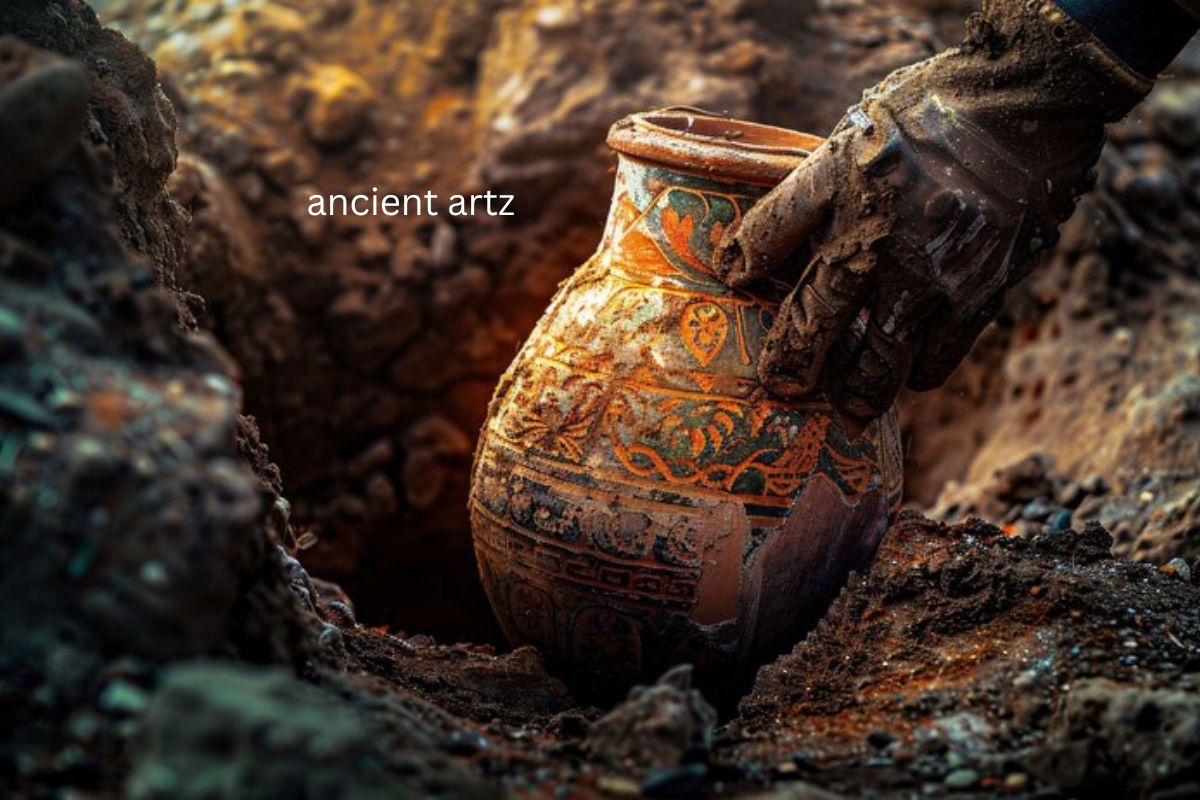ancient artz has always been a powerful form of expression, transcending time and culture. Among the most captivating forms is ancient art, where each brushstroke and chiseling reveals stories from long ago. These masterpieces offer a glimpse into the lives, beliefs, and practices of our ancestors, sparking wonder in those who encounter them. But what if we could dig deeper? What if we could uncover the techniques and materials that made these artworks possible? By exploring how ancient artists worked with their hands and minds, we can gain insight into creativity that continues to inspire today’s artists. Join us on this journey through time as we unravel the methods behind some of history’s greatest artistic achievements.
Overview of techniques used by ancient artists
Ancient artists employed a range of techniques that showcased their creativity and skill. From the dimly lit caves, they painted vivid scenes using natural pigments made from earth minerals and charcoal. These early masterpieces, like those found in Lascaux, reveal not only artistic talent but also an understanding of color.
Sculpting was another prominent technique. Artists carved intricate designs into stone or clay, often depicting deities and daily life. The precision required for such work speaks volumes about their dedication to detail.
Mosaic art flourished as well. By piecing together small tiles made from glass or stone, artisans created stunning patterns that adorned floors and walls. Each tiny piece contributed to a larger narrative, demonstrating both patience and vision among ancient creators.
These methods highlight the ingenuity of artists long ago, leaving us with lasting impressions etched in history.
A. Cave paintings and pigments
Cave paintings, some of the earliest forms of ancient art, reveal much about our ancestors. Found in locations like Lascaux and Altamira, these artworks date back tens of thousands of years. Their creators used natural pigments derived from minerals and plants.
Ochre was a popular choice—rich in iron oxide, it provided deep reds and yellows. Charcoal offered striking blacks for bold outlines. The blending techniques employed by artists allowed for softer hues and subtle gradients.
These early painters didn’t just slap colors on walls; they crafted meaning through their choices. Animal figures often represented not only food sources but also spiritual connections to the hunt or fertility rituals.
The methods were labor-intensive yet deeply symbolic. By understanding their pigment choices and application techniques, modern artists can draw inspiration from this rich legacy that speaks to humanity’s enduring relationship with nature and creativity.
B. Sculpting and carving methods
Sculpting and carving methods in ancient art reveal a deep connection between artist and material. Ancient artisans mastered techniques that transformed simple blocks into stunning figures.
Chiseling was common, allowing artists to create intricate details. They used tools made from stone or metal, meticulously refining their designs over time. This slow process required patience and precision.
Another notable approach was the relief technique. Artists carved figures that projected from a flat surface, creating depth without losing the integrity of the original material.
In some cultures, sculptors harnessed natural forms—using driftwood or stones shaped by nature itself—as canvases for their creativity.
The choice of materials played a vital role too; softness dictated one method while hardness demanded another approach altogether.
These practices not only produced beautiful works but also communicated stories long before written language emerged. The legacy of these techniques continues to inspire countless modern creators today.
C. Mosaic and tile work
Mosaic and tile work stand as testaments to the creativity of ancient artists. These intricate designs often adorned temples, public buildings, and homes, telling stories through carefully placed pieces.
Using small fragments of glass, stone, or ceramics, artisans crafted stunning images that captured life’s vibrancy. Each tile carried a purpose and meaning. The meticulous attention to detail was essential for achieving harmony in each piece.
Roman mosaics featured geometric patterns while Byzantine works showcased religious themes. This diversity reflects cultural values and artistic intentions across different eras.
The durability of these materials allowed many mosaics to survive centuries. Modern artists can draw inspiration from this method by integrating contemporary motifs into traditional techniques.
Experimenting with color combinations and textures can lead to unique expressions in today’s artwork. By embracing mosaic artistry, creators not only honor ancient traditions but also push the boundaries of their craft.
Materials used by ancient artists
Ancient artists were masters of their environment, utilizing materials that nature provided. Stone was a primary choice for sculptors. It offered durability and beauty, allowing them to create lasting masterpieces.
Clay played an equally important role in artistic expression. Pottery from ancient civilizations reflects both functionality and artistry, showcasing intricate designs shaped by skilled hands.
Wood also found its way into the hands of many artisans. From carved figures to everyday objects, it added warmth and texture to their creations.
In contrast, some artists ventured into synthetic materials like glass. The vibrant hues achieved through techniques such as blowing or casting showcased their innovative spirit.
Glazes transformed pottery with stunning colors and finishes. By mastering these substances, they elevated functional items into works of art worthy of admiration today. Each material tells a story about creativity across ages.
A. Natural materials such as stone, clay, and wood
ancient artz had an intimate relationship with their materials. Stone, clay, and wood were not just mediums; they were extensions of their creativity.
Stone was revered for its durability. Artists carved intricate sculptures from marble and limestone, leaving behind masterpieces that still captivate us today. The grain and texture of each stone informed the final piece, allowing for stunning variations.
Clay offered versatility. Pottery crafted from this natural material showcased both functionality and artistic expression. Ancient cultures used different firing techniques to create vibrant colors and unique finishes, showcasing their innovation.
Wood was another favored medium. Its warmth brought life to sculptures and furniture alike. Carvings often depicted deities or everyday scenes, illustrating a deep connection between art and daily life in ancient societies.
These natural materials shaped the aesthetics of ancient artz while reflecting cultural values that resonate even now.
B. Synthetic materials like glass and glazes
Synthetic materials like glass and glazes have revolutionized how artists express their creativity. Ancient artisans were pioneers in exploring these vibrant mediums. They crafted stunning pieces that captivated audiences with their luminous qualities.
Glass, for instance, was often used to create intricate mosaics or stained glass windows. The way light interacts with these surfaces adds depth and emotion to any artwork.
Glazes transformed pottery into exquisite functional art. By experimenting with various recipes, ancient potters achieved a palette of colors and textures that still inspire today’s ceramicists.
These synthetic materials not only enhanced aesthetic appeal but also provided durability. Artists understood the importance of longevity in their creations, ensuring they would withstand the test of time.
Their innovative spirit encourages modern creators to explore similar techniques, blending tradition with contemporary visions for a fresh take on age-old practices.
How modern artists can incorporate these techniques and materials into their work
Modern artists have a wealth of inspiration to draw from the techniques and materials used in ancient art. One way is through experimentation with natural pigments derived from minerals and plants. Creating your own paint allows for unique color palettes that echo historical methods.
Incorporating sculpting techniques can also breathe life into contemporary installations. Artists might explore carving softer stones or even wood, channeling the craftsmanship of ancient artisans while adding their personal twists.
Mosaic work remains relevant today, too. By using modern tiles alongside traditional ones, artists can create striking contrasts that celebrate both past and present aesthetics.
Additionally, many are embracing the use of glass as a medium—blending old-world glass-making techniques with innovative designs to produce vibrant works that capture light beautifully.
By blending these age-old practices with today’s materials, ancient artz can craft pieces rich in history yet fresh in expression.
Case studies of contemporary artists
Contemporary artists are increasingly drawing inspiration from ancient art. One example is Julie Mehretu, who incorporates the idea of layered narratives found in cave paintings into her large-scale abstract works. Her pieces reflect movement and history, echoing the storytelling aspect of ancient artistry.
Another notable artist is Vik Muniz. He uses materials like chocolate syrup and dirt to recreate famous artworks, mirroring techniques used by ancient mosaic creators. Muniz transforms everyday items into visual masterpieces while paying homage to historical methods.
Then there’s El Anatsui, whose sculptures made from bottle caps highlight traditional Ghanaian weaving techniques alongside contemporary themes. His work reflects both innovation and a deep respect for ancestral craftsmanship.
These artists remind us that ancient methods can inform modern practices, creating a dialogue between past and present in vibrant new ways.
Conclusion:
Ancient artz remains a treasure trove of inspiration for today’s creative minds. The techniques and materials used by artists from centuries past offer rich possibilities.
Exploring cave paintings reveals the ingenuity in pigment creation, while sculpting methods showcase the skill involved in transforming raw materials into lifelike forms. Mosaic work highlights precision and an eye for detail that still resonates with modern aesthetics.
Today’s artists can bridge this historical gap by experimenting with natural elements like clay or stone, embracing time-honored methods alongside innovative practices. Incorporating these ancient techniques not only enhances creativity but also deepens the connection to artistic heritage.
As we continue to evolve as creators, looking back at ancient artistry reminds us of our shared human experience and strengthens our understanding of art’s enduring power. There is always something new to learn from those who came before us; their legacy fuels contemporary innovation every day.
FAQs:
Ancient artistz employed a variety of techniques including cave paintings with natural pigments, sculpting and carving stone or wood, and creating intricate mosaics using small tiles.
What materials were commonly used in ancient artz?
Artists often worked with natural materials such as clay, stone, and wood. They also utilized synthetic materials like glass for mosaics and glazes for pottery.
How can contemporary artists incorporate ancient techniques into their work?
Modern artists can experiment by using similar raw materials found in nature or adopting traditional methods like hand-carving or mosaic-making to add depth to their creations.
Are there any notable examples of contemporary artists who use ancient art techniques?
Yes! Artists like El Anatsui have gained recognition for blending traditional African crafting methods with modern concepts while employing the aesthetics reminiscent of ancient artworks.
Why is studying ancient art important for today’s society?
Studying ancient artz offers insight into human history, culture, and creativity. It helps us appreciate our shared heritage and inspires innovation through time-tested skills.







